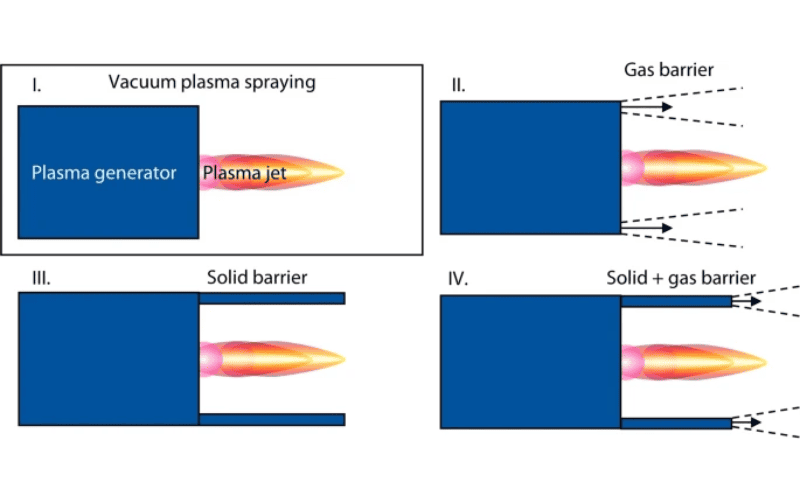février 12, 2024
Numerical and Experimental Analysis of a Solid Shroud in Multi-arc Plasma Spraying
Plasma spraying is characterized by high flexibility, but has challenges of high energy consumption and oxidation of the metallic spray particles. Modified plasma spraying processes using a gas or solid shroud have been developed to address these challenges, which aim to reduce the introduction of ambient air into the plasma jet and improve the process efficiency. Prior research mainly focused on single-cathode plasma generators, and the use of a shroud in multi-arc plasma spraying systems has not been thoroughly explored. The primary goal of this study is to analyze the effects of a solid shroud as a nozzle extension on the plasma jet of a three-cathode plasma generator numerically and experimentally. Computational fluid dynamics (CFD) is used to simulate a solid shroud, and the resulting design is constructed for experimental analysis. The experimental setup includes a nozzle extension with a transparent window for diagnostic measurements by a high-speed camera. To isolate the effects of the solid shroud from fluctuations in the power input, current, and voltage measurements are carried out synchronized with the high-speed recordings. Particle diagnostics are also conducted to analyze the properties of the in-flight particles without and with the solid shroud. The developed numerical model can be further used to optimize the shroud geometry for different process parameters.
Originally published at Journal of Thermal Spray Technology (12 February 2024)
By K. Bobzin, H. Heinemann, A. Dokhanchi
